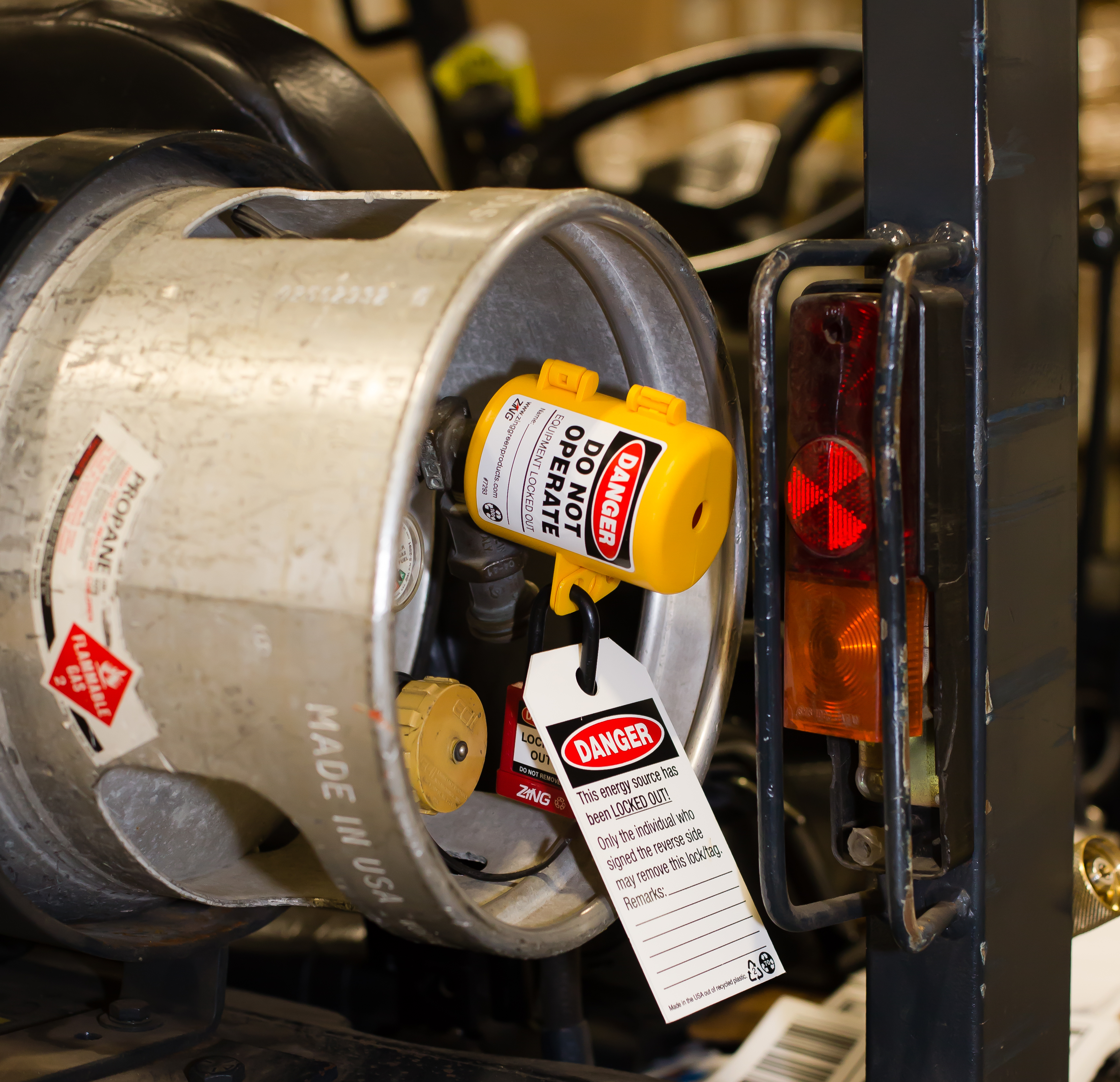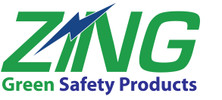Gas Cylinder Safety Guide
Posted by Zing Green Products on Jan 17th 2022
Compressed gas cylinders are useful tools for brazing, welding, and other essential tasks. However, an unplanned release of energy from a compressed gas cylinder can cause serious injury or death. If the contents of a compressed gas cylinder are accidentally or unsafely discharged, it can become an extremely dangerous projectile. The contents of a cylinder may also be hazardous to work with and may react dangerously with other gases or chemicals. As such, detailed gas cylinder safety procedures must be developed and implemented. A compliant safety program must include workplace-specific procedures and effective employee training. This article will detail compressed gas cylinder best practices, label requirements, and tips for storage, handling, and use.

GENERAL BEST PRACTICES
- Cylinders must be kept away from flames, sparks, and electrical circuits.
- Oxygen tanks cannot be used as a substitute for compressed air because this may cause an explosion hazard. Greasy and oily objects can also be explosion hazards when exposed to oxygen.
- Tanks can only be refilled by authorized employees.
- When a job is completed, valves should be turned off and, when possible, the lines should be bled.
- When a cylinder is empty, close valves, bleed the system, and remove the regulator. The cylinder must be marked as empty and placed in a designated area.
CYLINDER LABELING
Compressed Gas Cylinders must clearly identify the contents within. If a label is not present or is in any way illegible or unclear, do not use the cylinder. If you cannot determine the contents of the cylinder from the label, the cylinder should be marked “contents unknown” and returned to the manufacturer. Do not try to identify the contents of a cylinder by something other than the label. Color-coding of the cylinder or the cap varies from manufacturer to manufacturer and is not a safe way to determine the contents.
The contents of a compressed gas cylinder must be found by carefully reading the label. Labels are color-coded to indicate the type of hazard a cylinder might pose:
Blue: indicates a health hazard
Red: indicates flammability
Yellow: indicates reactivity, including explosion hazards
White: indicates a health hazard
HANDLING
When using compressed gas cylinders, the appropriate PPE must be used. This usually includes foot protection to protect your feet from heavy cylinders and safety glasses, especially when connecting or disconnecting regulators and gas lines. Other PPE may also be necessary, depending on the type of cylinder and the type of job being performed. For instance, gases like oxygen, nitrogen, and carbon dioxide can cause severe frostbite and require the use of gloves before handling. The safety data sheet for the gas you are using will contain detailed information on how to use the gas safely. You must be familiar with the relevant safety data sheets before working with cylinders.
In case an emergency occurs when transporting or using gas cylinders, it is imperative to know the location of all emergency equipment in your workplace. This includes fire extinguishers, eye wash stations, breathing apparatuses, and ventilation areas.
SECURING CYLINDERS
An unintended release of energy from a compressed gas cylinder can cause cylinders, which often weigh well over 100 pounds, to travel at high speeds and with extremely dangerous force. Securing cylinders properly can prevent cylinders from causing serious injury, death, or property damage. Some common ways of securing cylinders are:
- Placing cylinders in a holding cage
- Attaching cylinders to a wall or heavy workbench
- Installing non-tip bases, which prevent a cylinder from accidentally tipping over and thereby releasing unintended force.
Cylinders can be secured with chains, plastic coated wires, or heavy-duty straps. When securing a cylinder, the chain, strap, or wire must be secured on the upper half of the cylinder. It is not permissible to store multiple cylinders with one chain.
CYLINDER/VALVE OUTLET/ REGULATOR CONNECTIONS
Outlet connections are designed to prevent mixing of incompatible gases. As such, you should never use an adapter to connect a valve to a cylinder, or a valve to regulator. Regulators are typically gas-specific and cannot be attached to unsafe valve fittings. Do not apply oil or grease to fittings, because this may cause unsafe reactions with the gas inside the cylinder.

OPENING AND CLOSING VALVES
Valves generally are operated with a hand wheel or a valve stem. When opening a valve, alert other employees in the area and make sure the valve is pointed away from you. Always keep the valve closed when not in use, even on empty cylinders. If the valve is open, moisture can enter the cylinder and cause deterioration.
INSPECTING BEFORE USE
Leaks in valve cylinders can cause dangerous conditions. Many gases could cause fire hazards, and some are hazardous to breathe. For this reason, compressed gas cylinders should always be kept in a well-ventilated area. When inspecting a cylinder, first check for leaks. Leaks can be discovered by checking the pressure readings. An abnormal reduction in pressure indicates a leak:
- The high-pressure gauge indicates the pressure between the valve and the regulator
- The low-pressure gauge indicates the pressure between the regulator and the torch.
If only a low-pressure gauge is present, check for leaks between the valve and regulator by opening the valve and slowly back off the regulator adjustment screw. Spray the connections with a soap solution to test connections. Flammable gas detectors should be used for combustible gas systems. Never use an open flame to test for gas.
If any leak is discovered, take the appropriate designated action to ensure safety. After inspection, an inspection tag that indicates the date and name of the tester must be attached to the cylinder. If the cylinder failed the inspection, it must be immediately removed from the area.
STORAGE AND TRANSPORTATION
Storage areas must be well-ventilated and free from oil and grease. The temperature must not exceed 125-degrees Fahrenheit. No smoking signs must be present to discourage fire or explosion hazards.
Cylinders with incompatible gases must be kept apart. Flammable gas and oxygen storage areas must be separated by at least 20 feet or an adequate firewall (at least 5 feet high, and a fire rating of at least ½ hour). Oxygen must also be kept away from oil and grease.
When transporting compressed gas cylinders, the regulator must be removed and a valve-protection cap installed to protect against damage. If transporting multiple cylinders, make sure to leave adequate space between the cylinders. If using a moving cart, only transport one cylinder at a time.
CONCLUSION
Compressed gas cylinders are an essential tool for many workplaces but can pose several serious hazards. These include projectile, explosion, chemical and fire hazards. Procedures must be in place to control or eliminate these hazards. Failure to do so can result in serious injury or death. For more information about compressed gas cylinders, visit: https://www.osha.gov/SLTC/compressedgasequipment/...
